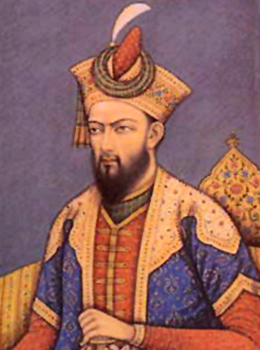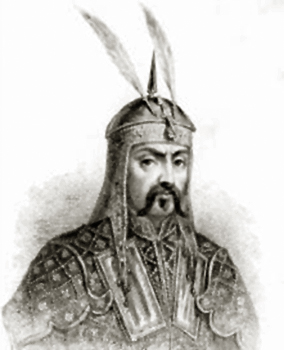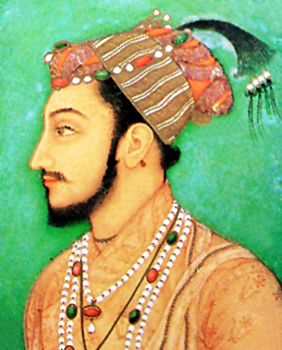 Astrology under Aurangzeb occupied a rather conflicted position. Aurangzeb was somewhat less inclined than some towards astrological practices. He believed in and followed some practices and sometimes agreeing to the convictions of his followers, and sometimes rejecting them altogether and following a more puritanical religious doctrine. As Emperor, he nominated Sunday, dedicated to the sun, as the day of rest and celebration. Some historians have observed that this custom had been in use since the time of Jahangir, who, according to the Western chroniclers, adopted it because he was careful to appease the Christians. However, it is more probable that Sunday was a holiday in homage to his Timurid lineage, of which he was very proud. Genghis Khan and Tamerlane claimed that they were descended from the sun. Thursday was auspicious for travel and, since the Emperor Humayun`s time, reserved for visits of Sayyids (descendants of the Prophet Muhammad) and professors of Quranic Law. Saturday was for giving audience to men of learning and holy men, because the planet Saturn was said to protect religion. Sunday and Tuesday were reserved for statesmen and rulers since they were placed under the dominance of the sun and Mars. On Monday and Wednesday, the court took to the pleasures of music, games, and dances, and Friday was the day the faithful assembled to pray. Other essentially religious practices followed from this strict and systematic timetable recommended by astrologers. Thus, Thursday was not auspicious for marriages, for it was believed that God created unpleasant things on that day. Friday was favourable for it was the day the Prophet returned to Medina and it was believed to be the day ordained for the Resurrection and Adam`s arrival in Paradise.
Astrology under Aurangzeb occupied a rather conflicted position. Aurangzeb was somewhat less inclined than some towards astrological practices. He believed in and followed some practices and sometimes agreeing to the convictions of his followers, and sometimes rejecting them altogether and following a more puritanical religious doctrine. As Emperor, he nominated Sunday, dedicated to the sun, as the day of rest and celebration. Some historians have observed that this custom had been in use since the time of Jahangir, who, according to the Western chroniclers, adopted it because he was careful to appease the Christians. However, it is more probable that Sunday was a holiday in homage to his Timurid lineage, of which he was very proud. Genghis Khan and Tamerlane claimed that they were descended from the sun. Thursday was auspicious for travel and, since the Emperor Humayun`s time, reserved for visits of Sayyids (descendants of the Prophet Muhammad) and professors of Quranic Law. Saturday was for giving audience to men of learning and holy men, because the planet Saturn was said to protect religion. Sunday and Tuesday were reserved for statesmen and rulers since they were placed under the dominance of the sun and Mars. On Monday and Wednesday, the court took to the pleasures of music, games, and dances, and Friday was the day the faithful assembled to pray. Other essentially religious practices followed from this strict and systematic timetable recommended by astrologers. Thus, Thursday was not auspicious for marriages, for it was believed that God created unpleasant things on that day. Friday was favourable for it was the day the Prophet returned to Medina and it was believed to be the day ordained for the Resurrection and Adam`s arrival in Paradise.
The influence of astrology was so deeply ingrained in the Mughals that the dynasty had adopted the fish, a primordial symbol of life, as one of their emblems. He did adopt the fish emblem when he became Emperor, but merely as a prudent gesture, to follow an already accepted custom.
 Like Dara Shikoh, Aurangzeb often used the charms and blessings of dervishes before a battle or in moments of crisis although generally, it seems, he regarded these mendicants with suspicion. Aurangzeb`s attitude towards astrologers fluctuated. He relied upon their prediction in his decisive battle against Dara Shikoh. An Uzbek called Qutub Beg foretold that he would be defeated if he rode at the head of his army on the elephant surmounted by the royal canopy. So, instead of riding with his troops as was his usual practice, Aurangzeb directed the battle from his camp and had his tutor, Sheikh Mir, ride his elephant in his place. It is said that Sheikh Mir was killed during the course of the battle by a musket blow. However, Aurangzeb`s forces regrouped and won the battle. In the War of Succession, Aurangzeb was probably aided by astrology when he attacked the Red Fort. It is related that astrology literally had the gates of the fort opened for him. His father had shut himself in there, either because of some superstitious beliefs or because he considered that the fort was easier to defend and had left Agra to be protected by his Commander. The Commander studied the horoscopes of the four brothers and arrived at the conclusion that the third son would rule; it appears he called up his cannon too late and only fired at the enemy to put up a show of defence, and it is even alleged that he fired blanks. Thus he surrendered the fort. In June 1658, when the wily Aurangzeb drew his brother Murad into a fatal trap in Kotli Ki Ghat near Mathura, the date was supposed to have been chosen very carefully by astrologers.
Like Dara Shikoh, Aurangzeb often used the charms and blessings of dervishes before a battle or in moments of crisis although generally, it seems, he regarded these mendicants with suspicion. Aurangzeb`s attitude towards astrologers fluctuated. He relied upon their prediction in his decisive battle against Dara Shikoh. An Uzbek called Qutub Beg foretold that he would be defeated if he rode at the head of his army on the elephant surmounted by the royal canopy. So, instead of riding with his troops as was his usual practice, Aurangzeb directed the battle from his camp and had his tutor, Sheikh Mir, ride his elephant in his place. It is said that Sheikh Mir was killed during the course of the battle by a musket blow. However, Aurangzeb`s forces regrouped and won the battle. In the War of Succession, Aurangzeb was probably aided by astrology when he attacked the Red Fort. It is related that astrology literally had the gates of the fort opened for him. His father had shut himself in there, either because of some superstitious beliefs or because he considered that the fort was easier to defend and had left Agra to be protected by his Commander. The Commander studied the horoscopes of the four brothers and arrived at the conclusion that the third son would rule; it appears he called up his cannon too late and only fired at the enemy to put up a show of defence, and it is even alleged that he fired blanks. Thus he surrendered the fort. In June 1658, when the wily Aurangzeb drew his brother Murad into a fatal trap in Kotli Ki Ghat near Mathura, the date was supposed to have been chosen very carefully by astrologers.
On the other hand, his unfortunate brother Dara Shikoh did not have the same luck with soothsayers, though he hired them in great numbers and firmly believed in then His main astrologer, Bhawani Das, had predicted in writing that he would be Emperor. But his victorious sibling, Aurangzeb, ascended the throne on almost the exact date astrologers had foretold for him. The astrologers had predicted that Dara would ascend the throne during the first week of the holy month of Ramzaan 1658, but it was Aurangzeb who became Emperor on 27th Shaban (two or three days before Ramzan) that year. It is said that the Emperor Jahangir had given orders that he should be woken up when his grandson was born, having announced that if the child lived, he would be the conqueror of all India.
 In 1663, Aurangzeb went to Kashmir with his sister Raushanara to recuperate after a serious illness. He set out on the date and time chosen by his astrologers, 2 December at 3 o`clock in the afternoon. It seems that the day and time must have been lucky since he recovered.
In 1663, Aurangzeb went to Kashmir with his sister Raushanara to recuperate after a serious illness. He set out on the date and time chosen by his astrologers, 2 December at 3 o`clock in the afternoon. It seems that the day and time must have been lucky since he recovered.
However, the potential for undue influence of astrologers on the Emperor must often have been a source of discomfort to the courtiers. Aurangzeb once banished a dervish who had set up shop below the army because he feared the man could be paid by his enemies to destroy the morale of his troops before a battle. However, he could not oppose these beliefs effectively as they were too deeply ingrained among his followers, especially in the army. The soldiers were adventurers who had come to fight and to gain glory, money, or rank at the court of the conqueror; thus their lives were at risk and they needed the assurances of astrologers and suchlike to bolster their confidence. Even though these men were hardened in war, they needed the prediction of victory to inspire them before they plunged into battle. The Emperor himself, when he rode at the head of his Lashkar (army), never gave orders without first consulting the oracles by dipping the tips of his fingers in a bowl of curdled milk or touching a fish. A bird`s song, the capture of an animal of prey before battle, or a halo around the sun predicted victory for the rough and credulous men who followed their Prince. The death of a lion in a hunt on the way stopped the march, which could only be resumed when the astrologers permitted.
As mentioned before, Aurangzeb`s attitude towards astrology was constantly fluctuating. In 1670 Aurangzeb decided to bring severity to the court and prohibited astrology and discarded these customs. His religious remorse also led him to forbid the reading of the poet Hafiz, the most popular poet of the time, even though eloquent verses were always at the tip of his pen in writing and of his tongue in conversation. It was the custom among the ladies and nobles of the court to begin the day by drawing omens from the first verse opened at random from the book of Hafiz`s poems, and Aurangzeb considered this practice blasphemous. Shah Jahan had drawn omens in this way, and Aurangzeb dreaded the influence of a chance adverse couplet being recited at a critical moment by a noble or the court poet. His religious sensibilities were repulsed by this practice.
The influence of astrology was so pervasive that even after Aurangzeb had banished astrologers from his court in 1670, the Emperor sent a letter with a strange request to his son Moazzam Shah Alam, who he had promoted to `Miran Shah`, the title of Tamerlane. He requested his son to have coins stamped in his name with the inscription, `I stamp my coins with the seven planets. I sound my drums up to clear the moon.` It appears that Humayun`s legacy still lingered.



















